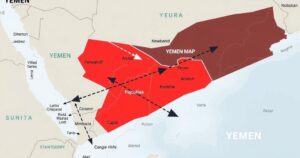Strengthening Iran-Pakistan Cooperation to Combat Border Terrorism

The Iran-Pakistan border faces rising terrorist activities, primarily due to groups like TTP and BLA. An increase in attacks has been noted in Iran’s Sistan and Baluchestan region, reflecting a need for cooperation between the two countries. Key obstacles include differing security priorities and external influences on regional dynamics. Enhanced collaboration is vital for both nations to mitigate the ongoing threat of terrorism.
Recent statistics from the Encyclopedia of Terror Victims in Iran report over 23,000 fatalities due to terrorism and counterterrorism efforts since the Islamic Revolution. This devastating figure places Iran among the nations most affected by terrorism, alongside its neighbor, Pakistan. One of Iran’s critical security issues has been the sharp rise in terrorist acts in the southeastern province of Sistan and Baluchestan, which has experienced a staggering 115% increase in attacks and a 200% surge in casualties within the past year.
In an interview with Muhammad Murtaza, a respected expert on regional security and violent extremism, various aspects of terrorism affecting both Iran and Pakistan were discussed. The analysis examines the state of terrorism, highlighting the challenges faced and potential cooperative strategies for addressing the issue. Murtaza reflected on how Pakistan’s own security situation has worsened since the Taliban reclaimed control of Afghanistan, leading to an uptick in terrorist activities.
Specifically addressing terrorism in Pakistan, the major groups include Tehrik-e-Taliban Pakistan (TTP), Balochistan Liberation Army (BLA), and newer factions. The pattern of attacks has shifted from random strikes to more calculated operations, with a significant concentration occurring in Khyber Pakhtunkhwa. In 2024, these attacks resulted in over 850 fatalities, demonstrating a 23% rise compared to the previous year, alongside worrisome trends in suicide bombings by the BLA.
The financing of these terrorist operations remains complex, involving various sources such as charities, informal money transfers, and criminal enterprises. While there are indications of external support, tracking these financial avenues can be challenging due to the multifaceted nature of funding methods utilized by terrorist organizations. Despite efforts to disrupt these funding networks, the collaboration between criminal and militant elements persists, sustaining terrorist activities.
While coordination exists between Iran and Pakistan regarding their shared security concerns, clearer identification of mutual threats is imperative. The partnership established through a 2014 security agreement has not translated into significant practical cooperation. Tensions have escalated, leading to public dissatisfaction in Pakistan as cross-border operations were perceived as violations of sovereignty.
Extra-regional actors, including the United States, Saudi Arabia, and India, have also influenced the dynamics along the Iran-Pakistan border, steering policy directions according to national interests. Pakistan’s ties with these entities occasionally complicate its relations with Iran, notably in the context of security and economic stability. The legacies of past foreign interventions continue to impact the socio-political landscape, necessitating a more inclusive regional approach moving forward.
Recent high-level visits between Iranian military officials and their Pakistani counterparts denote an opportunity for enhanced bilateral cooperation across various sectors. Nevertheless, historical undercurrents of distrust necessitate a cautious approach, with confidence-building measures critical for successful collaboration. Cultivating trust and working towards common objectives can pave the way for a stable and secure border region.
In summary, both Iran and Pakistan face serious terrorism challenges that have led to significant casualties in both countries. Cooperation and intelligence sharing are crucial to combat these threats. However, existing barriers such as divergent security priorities and external influences must be addressed to pave the way for effective collaboration and mutual understanding.
Original Source: www.tehrantimes.com








